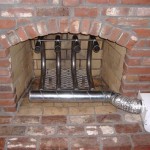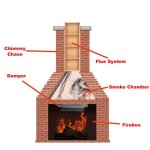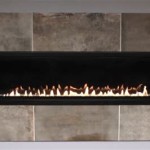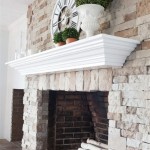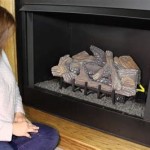How to Remove Paint From a Stone Fireplace
A stone fireplace, often a focal point in a home, can suffer from aesthetic degradation when covered with paint. Paint, while sometimes applied with good intentions, can obscure the natural beauty of the stone, trap moisture, and potentially damage the stone's surface over time. Removing paint from such a delicate and porous surface demands a careful and considered approach. This article details several proven methods for effectively removing paint from a stone fireplace, emphasizing the importance of safety, surface preparation, and appropriate technique selection. The successful removal of paint requires patience and diligence, ensuring the underlying stone is revealed and preserved.
Before commencing any paint removal process, it is crucial to identify the type of paint applied to the stone. Different paint types respond differently to various removal methods. Oil-based paints, for example, generally require stronger solvents compared to latex-based paints. Acrylic paints occupy a middle ground. Identification can sometimes be achieved by examining old paint cans or consulting previous homeowners. If the paint type remains unknown, starting with the gentlest removal method and progressively moving to more aggressive techniques is recommended. This approach minimizes the risk of damaging the stone surface.
Safety precautions are paramount when working with paint removal chemicals and tools. Adequate ventilation is essential, particularly when using solvents. Protective eyewear, gloves, and respirators are necessary to prevent skin and respiratory irritation. Working in a well-ventilated area or utilizing a respirator with appropriate filters will mitigate the risks associated with inhaling fumes from chemical strippers. Furthermore, protecting the surrounding areas, such as flooring and furniture, with drop cloths or plastic sheeting, prevents accidental damage from splashes or spills of paint removal products. The disposal of used solvents and paint-laden materials must adhere to local regulations to ensure environmental safety.
Key Point 1: Chemical Stripping
Chemical stripping is a widely used method for removing paint from stone surfaces. Chemical strippers work by softening the paint, allowing it to be scraped away more easily. Various types of chemical strippers are available, including solvent-based, caustic-based, and bio-based options. Solvent-based strippers are effective for removing multiple layers of paint and are often preferred for oil-based paints. Caustic-based strippers, typically containing lye, are highly effective but require careful handling due to their corrosive nature. Bio-based strippers are a more environmentally friendly alternative and are generally less aggressive than solvent-based or caustic-based options. The choice of stripper depends on the type of paint, the number of layers, and the desired level of aggressiveness.
The application of chemical strippers requires careful adherence to the manufacturer's instructions. Typically, the stripper is applied liberally to the painted surface using a brush or roller. Sufficient time must be allowed for the stripper to penetrate and soften the paint. This dwell time can vary depending on the product and the thickness of the paint layers. After the recommended dwell time, the softened paint can be scraped away using a plastic scraper. Metallic scrapers should be avoided as they can scratch the stone surface. Multiple applications of the stripper may be necessary to remove all paint layers, particularly on heavily painted surfaces. Following paint removal, thorough cleaning of the stone surface with water and a neutral detergent is crucial to remove any residual stripper and prevent further chemical reactions.
Neutralizing the chemical stripper after use is crucial. The specific neutralizing agent will depend on the type of stripper used. For caustic-based strippers, a solution of vinegar and water is commonly used to neutralize the alkaline residue. Solvent-based strippers may require rinsing with mineral spirits or other appropriate solvents. Failing to neutralize the stripper can lead to ongoing chemical reactions that damage the stone or interfere with subsequent sealing or finishing.
Key Point 2: Heat Gun Method
Using a heat gun is another effective method for removing paint from stone, particularly older, brittle paints. The heat gun works by softening the paint, making it easier to scrape away. This method is generally less messy than chemical stripping and avoids the use of harsh chemicals, making it a preferable option for individuals sensitive to chemicals. However, extreme caution must be exercised to avoid overheating the stone, which can lead to cracking or other damage. The heat gun should be used in a controlled manner, focusing the heat on small areas at a time.
The process involves holding the heat gun a few inches away from the painted surface and moving it slowly and steadily. As the paint softens, it can be scraped away using a plastic scraper. The scraper should be held at a shallow angle to avoid gouging the stone. It is important to work quickly, as the paint will re-harden as it cools. Overlapping passes with the heat gun ensure even heating and facilitate easier paint removal. Avoid concentrating the heat on one area for an extended period, as this can cause the stone to overheat and potentially crack. Constant monitoring of the stone's temperature is necessary to prevent damage.
After removing the paint, the stone surface may still have residual adhesive or paint residue. This can be removed using a wire brush or a mild abrasive pad, taking care not to scratch the stone. Thorough cleaning with water and a mild detergent is recommended to remove any remaining residue. Inspect the stone for any signs of damage, such as cracks or discoloration, and address them accordingly before proceeding with any further treatments.
Key Point 3: Abrasive Blasting
Abrasive blasting, also known as sandblasting or media blasting, is a more aggressive method for removing paint from stone. It involves propelling abrasive media, such as sand, glass beads, or walnut shells, at high speed against the painted surface. This method is highly effective for removing multiple layers of paint and is often used on large or heavily painted stone surfaces. However, abrasive blasting can be damaging to softer stones and should only be performed by experienced professionals. The choice of abrasive media and the blasting pressure must be carefully considered to minimize the risk of damage.
Before commencing abrasive blasting, it is crucial to protect the surrounding areas from dust and debris. Covering windows, doors, and landscaping with plastic sheeting is essential. Wearing appropriate protective gear, including a full-face respirator, hearing protection, and protective clothing, is mandatory. The blasting process generates a significant amount of dust, which can be harmful to breathe and can contaminate the surrounding environment. Ensure adequate ventilation or use a dust collection system to minimize dust exposure.
The blasting process involves directing the abrasive media at the painted surface using a specialized blasting machine. The nozzle should be held at a consistent distance from the stone and moved in a steady, overlapping pattern. The blasting pressure should be adjusted based on the type of stone and the thickness of the paint layers. Start with a low pressure and gradually increase it until the paint is effectively removed without damaging the stone. Regular inspection of the blasted surface is necessary to ensure that the stone is not being excessively abraded. Following abrasive blasting, thorough cleaning of the stone surface with water is required to remove any residual abrasive media. The blasted surface may require sealing to protect it from future staining or damage. This method is best left to trained professionals due to the potential for serious and irreversible damage to the stone if done incorrectly.
Regardless of the chosen method, a post-removal cleaning process is vital. Gently washing the surface with a soft brush and mild detergent will remove any remaining residue. Rinsing thoroughly with clean water ensures that no cleaning agents remain on the stone. Allowing the stone to dry completely before applying any sealant or protective coating inhibits moisture entrapment and promotes long-term preservation. A careful assessment of the cleaned surface reveals any imperfections or areas that require further attention, ensuring a satisfactory final result.

Paint Removal From A Stone Fireplace

How Can I Remove Latex Paint From A Stone Fireplace Hometalk

After You Have Stripped Paint Off Of A Stone Fireplace Know How Are Usually Left With Fine Pai Remover Brick

How Can I Remove Latex Paint From A Stone Fireplace Hometalk
crop%20lite.jpg?strip=all)
Paint Removal From Stone Masonry

Stone Fireplace Makeover Part 1 Plans Prep Organized Ish

How To Remove Paint From A Brick Fireplace Hometalk

Paint Powder Coat Removal With Dustless Blasting Willsha

Taking Paint Off A Brick Fireplace Pt 1 Salt Rook

Stone Fireplace Makeover Part 1 Plans Prep Organized Ish
Related Posts

